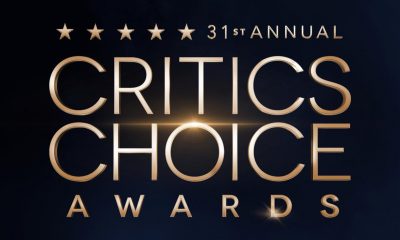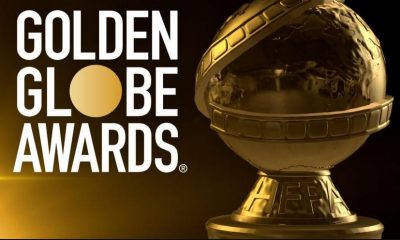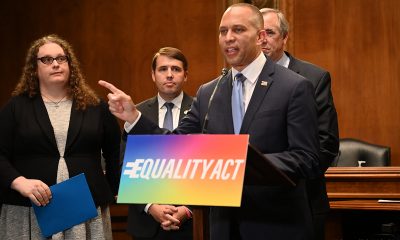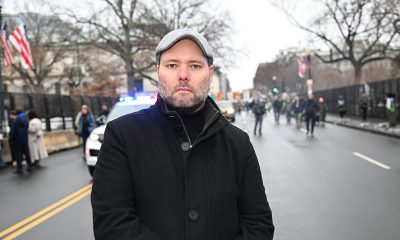Arts & Entertainment
Four Larks creates beautiful monster in world-class ‘Frankenstein’
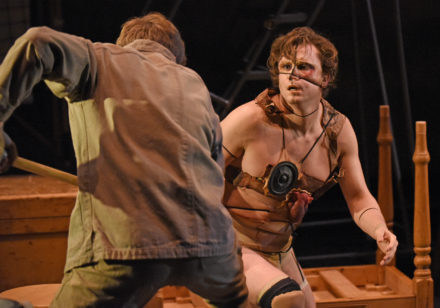
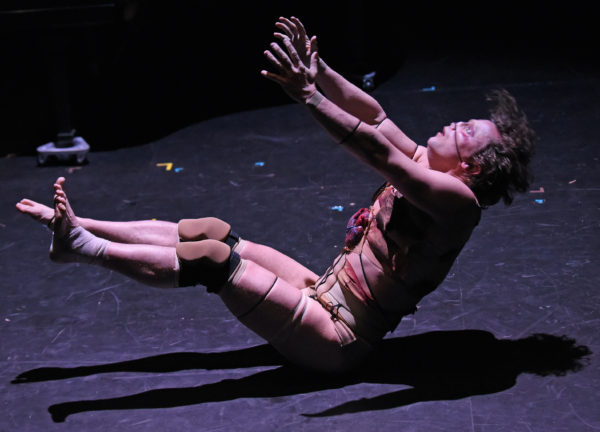
From the moment the lights come up on the Four Larks production of “Frankenstein” to reveal a genteel 19th-century sea captain, singing a period chamber song while accompanied by live acoustic musicians in front of a stark white backdrop, it’s clear you are in for something unexpected.
One might argue that the LA-based performance troupe has already made a name for itself on the basis of delivering the unexpected, through its immersive, experiential productions that exist “at the intersection of theatre, music, visual art and dance” (as their online self-description puts it), and that anyone seeing their work should therefore expect, well, the unexpected.
Even so, thanks to the cultural saturation that has made the story of Frankenstein and his misbegotten creation familiar to almost every member of modern American civilization over the age of three, an audience member walking into the Lovelace Studio Theatre at the Wallis Annenberg Center for the Performing Arts, where Four Larks has mounted their latest effort for a now-extended run through March 7, will unavoidably be carrying their own well-encoded assumptions about the tale – and they likely won’t bear more than a passing resemblance to the 1818 novel with which Mary Shelley introduced it to the world.
Consequently, many members of the crowd probably won’t know, or won’t remember, that Shelley’s horror classic begins and ends in the frozen Arctic wasteland, with a naval officer on a mission to reach the North Pole (a situation rendered perfectly and instantaneously by the arresting opening tableau), or that the title character relates his sad history as a cautionary tale against the dangers of man’s insatiable desire to bend the universe to his own will.
Four Larks, however, has not forgotten. In this ingenious cabinet-of-curiosities-style production, troupe founders Mat Sweeney and Sebastian Peters-Lazaro, along with librettist Jesse Rasmussen, strip away the generations’ worth of cultural baggage that has been piled atop Shelley’s original, allowing it to serve as both their inspiration and their road map for a densely-packed unwinding of the narrative that takes us from its pre-Victorian setting up to the precipice of our own modern future within the space of 70 minutes.
Utilizing a breathtakingly talented ensemble of twelve performers (who rarely leave the stage), the multi-media performance reclaims the author’s voice in her name by making her a central presence onstage; it is Mary Shelley herself who speaks the words as her literary stand-in enacts the story of his own act of creation, serving as a constant reminder that this quintessential tale of terror came from the imagination of a woman – a fact that has particular resonance in a world in which the patriarchal urge to dominate and control has led us to the brink of self-destruction.
Underscoring the contemporary import of that radical motif – as well as the prescience of Shelley’s not-very-subtle warning about the dangers of unchecked technological advancement – is a near-hypnotic progression of sights, sounds, and ideas that incorporates speaking, singing, movement, sound, lights, projections, and environmental effects to connect the dots between Frankenstein’s transgressive creation – or rather, the reckless hubris it represents – and a modern world living in the ominous shadow of nuclear destruction, artificial intelligence, and climate change.
Along the way, the literal aspects of the story sometimes get lost within the conceptual flourishes – especially for those unfamiliar with the original text – but in this envisioning, which Four Larks actor Lukas Papenfusscline, calls a “collaboration” with Shelley herself, that is part of the point. Though the production has clung tightly to the novel in terms of remaining faithful to its plot, it revels in translating its ideas into a stylized, contemporary vision that clearly communicates them to an audience and allowing them to hit us in a more direct and visceral way.
Still, many of the show’s highlights are masterful renditions of segments from the book. The creature’s birth, brought to life through the acrobatic contortions of actor Max Baumgarten, is a master class of physical performance that evokes the loneliness, pain and transgression of the experience while dazzling us with an unforgettable display of sheer grace and prowess. Similarly, the lengthy episode depicting the creature’s secret spying on the life of a human family through the windows of their cabin in the woods is executed with a crystalline simplicity that both conveys its essence and illuminates its profound observations about humanity. Finally, in an electrified (and electrifying) climactic flourish, the story’s last act of creation is terrifyingly rendered in a jaw-dropping combination of performance, stagecraft and technology that unites past and present in a spectral vision conveying the all-encompassing dread of a future mankind has created in its own image.
It may all sound a bit overwhelming, and that is exactly what was intended, not just by Four Larks but by Mary Shelley herself; but although there is no effort to soften the “shock and awe,” it is countered by the precision with which this intricately choreographed theatrical exercise is executed.
As Papenfusscline put it in an interview with the Blade ahead of the show’s opening, “It’s like a Swiss watch with a million little parts, some of it is the music, design, some of it is the acting, and we’re creating this intricate work of art that as a performer is endlessly rewarding. I’ve just had a blast.”
Judging by the sleeper success this world-class production has enjoyed in its world-premiere run at the Wallis, audiences are having a blast, too.
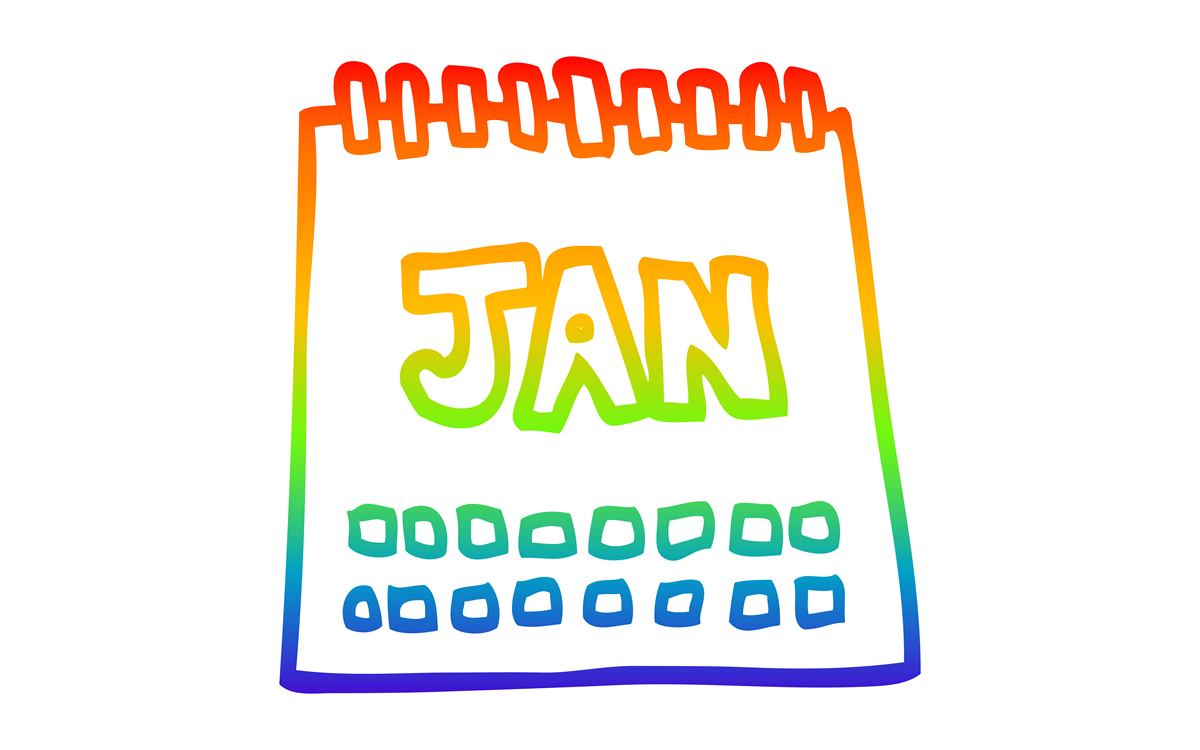
Friday, January 9
Women in Their Twenties and Thirties will be at 8 p.m. on Zoom. This is a social discussion group for queer women in the Washington, D.C. area. For more details, visit Facebook.
“Backbone Comedy” will be at 8 p.m. at As You Are. Backbone Comedy is a queer-run fundraiser comedy show at As You Are Bar DC, where comics stand up for a cause. Each show, a percentage of proceeds go to a local organization – Free Minds DC, a reentry organization for individuals impacted by incarceration. Tickets cost $19.98 and are available on Eventbrite.
Saturday, January 10
Go Gay DC will host “LGBTQ+ Community Brunch” at 11 a.m. at Freddie’s Beach Bar & Restaurant. This fun weekly event brings the DMV area LGBTQ+ community, including allies, together for delicious food and conversation. Attendance is free and more details are available on Eventbrite.
Monday, January 12
“Center Aging: Monday Coffee Klatch” will be at 10 a.m. on Zoom. This is a social hour for older LGBTQ+ adults. Guests are encouraged to bring a beverage of choice. For more information, contact Adam ([email protected]).
Genderqueer DC will be at 7 p.m. on Zoom. This is a support group for people who identify outside of the gender binary, whether you’re bigender, agender, genderfluid, or just know that you’re not 100% cis. For more details, visit genderqueerdc.org or Facebook.
Tuesday, January 13
Coming Out Discussion Group will be at 7 p.m. on Zoom. This is a safe space to share experiences about coming out and discuss topics as it relates to doing so — by sharing struggles and victories the group allows those newly coming out and who have been out for a while to learn from others. For more details, visit the group’s Facebook.
Trans Discussion Group will be at 7 p.m. on Zoom. This group is intended to provide an emotionally and physically safe space for trans people and those who may be questioning their gender identity/expression to join together in community and learn from one another. For more details, email [email protected].
Wednesday, January 14
Job Club will be at 6 p.m. on Zoom upon request. This is a weekly job support program to help job entrants and seekers, including the long-term unemployed, improve self-confidence, motivation, resilience and productivity for effective job searches and networking — allowing participants to move away from being merely “applicants” toward being “candidates.” For more information, email [email protected] or visit thedccenter.org/careers.
The DC Center for the LGBT Community will partner with House of Ruth to host “Art & Conversation” at 3 p.m. at 1827 Wiltberger St., N.W. This free workshop will involve two hours of art making, conversation, and community. Guests will explore elements of healthy relationships with a community-centered art activity. This workshop involves paint, so please dress accordingly. All materials will be provided. For more details, email [email protected].
Thursday, January 15
The DC Center’s Fresh Produce Program will be held all day at the DC Center for the LGBT Community. People will be informed on Wednesday at 5 p.m. if they are picked to receive a produce box. No proof of residency or income is required. For more information, email [email protected] or call 202-682-2245.
Virtual Yoga Class will be at 7 p.m. on Zoom. This free weekly class is a combination of yoga, breathwork and meditation that allows LGBTQ+ community members to continue their healing journey with somatic and mindfulness practices. For more details, visit the DC Center’s website.
Movies
‘Hedda’ brings queer visibility to Golden Globes
Tessa Thompson up for Best Actress for new take on Ibsen classic

The 83rd annual Golden Globes awards are set for Sunday (CBS, 8 p.m. EST). One of the many bright spots this awards season is “Hedda,” a unique LGBTQ version of the classic Henrik Ibsen story, “Hedda Gabler,” starring powerhouses Nina Hoss, Tessa Thompson and Imogen Poots. A modern reinterpretation of a timeless story, the film and its cast have already received several nominations this awards season, including a Globes nod for Best Actress for Thompson.
Writer/director Nia DaCosta was fascinated by Ibsen’s play and the enigmatic character of the deeply complex Hedda, who in the original, is stuck in a marriage she doesn’t want, and still is drawn to her former lover, Eilert.
But in DaCosta’s adaptation, there’s a fundamental difference: Eilert is being played by Hoss, and is now named Eileen.
“That name change adds this element of queerness to the story as well,” said DaCosta at a recent Golden Globes press event. “And although some people read the original play as Hedda being queer, which I find interesting, which I didn’t necessarily…it was a side effect in my movie that everyone was queer once I changed Eilert to a woman.”
She added: “But it still, for me, stayed true to the original because I was staying true to all the themes and the feelings and the sort of muckiness that I love so much about the original work.”
Thompson, who is bisexual, enjoyed playing this new version of Hedda, noting that the queer love storyline gave the film “a whole lot of knockoff effects.”
“But I think more than that, I think fundamentally something that it does is give Hedda a real foil. Another woman who’s in the world who’s making very different choices. And I think this is a film that wants to explore that piece more than Ibsen’s.”
DaCosta making it a queer story “made that kind of jump off the page and get under my skin in a way that felt really immediate,” Thompson acknowledged.
“It wants to explore sort of pathways to personhood and gaining sort of agency over one’s life. In the original piece, you have Hedda saying, ‘for once, I want to be in control of a man’s destiny,’” said Thompson.
“And I think in our piece, you see a woman struggling with trying to be in control of her own. And I thought that sort of mind, what is in the original material, but made it just, for me, make sense as a modern woman now.”
It is because of Hedda’s jealousy and envy of Eileen and her new girlfriend (Poots) that we see the character make impulsive moves.
“I think to a modern sensibility, the idea of a woman being quite jealous of another woman and acting out on that is really something that there’s not a lot of patience or grace for that in the world that we live in now,” said Thompson.
“Which I appreciate. But I do think there is something really generative. What I discovered with playing Hedda is, if it’s not left unchecked, there’s something very generative about feelings like envy and jealousy, because they point us in the direction of self. They help us understand the kind of lives that we want to live.”
Hoss actually played Hedda on stage in Berlin for several years previously.
“When I read the script, I was so surprised and mesmerized by what this decision did that there’s an Eileen instead of an Ejlert Lovborg,” said Hoss. “I was so drawn to this woman immediately.”
The deep love that is still there between Hedda and Eileen was immediately evident, as soon as the characters meet onscreen.
“If she is able to have this emotion with Eileen’s eyes, I think she isn’t yet because she doesn’t want to be vulnerable,” said Hoss. “So she doesn’t allow herself to feel that because then she could get hurt. And that’s something Eileen never got through to. So that’s the deep sadness within Eileen that she couldn’t make her feel the love, but at least these two when they meet, you feel like, ‘Oh my God, it’s not yet done with those two.’’’
Onscreen and offscreen, Thompson and Hoss loved working with each other.
“She did such great, strong choices…I looked at her transforming, which was somewhat mesmerizing, and she was really dangerous,” Hoss enthused. “It’s like when she was Hedda, I was a little bit like, but on the other hand, of course, fascinated. And that’s the thing that these humans have that are slightly dangerous. They’re also very fascinating.”
Hoss said that’s what drew Eileen to Hedda.
“I think both women want to change each other, but actually how they are is what attracts them to each other. And they’re very complimentary in that sense. So they would make up a great couple, I would believe. But the way they are right now, they’re just not good for each other. So in a way, that’s what we were talking about. I think we thought, ‘well, the background story must have been something like a chaotic, wonderful, just exploring for the first time, being in love, being out of society, doing something slightly dangerous, hidden, and then not so hidden because they would enter the Bohemian world where it was kind of okay to be queer and to celebrate yourself and to explore it.’”
But up to a certain point, because Eileen started working and was really after, ‘This is what I want to do. I want to publish, I want to become someone in the academic world,’” noted Hoss.
Poots has had her hands full playing Eileen’s love interest as she also starred in the complicated drama, “The Chronology of Water” (based on the memoir by Lydia Yuknavitch and directed by queer actress Kristen Stewart).
“Because the character in ‘Hedda’ is the only person in that triptych of women who’s acting on her impulses, despite the fact she’s incredibly, seemingly fragile, she’s the only one who has the ability to move through cowardice,” Poots acknowledged. “And that’s an interesting thing.”
Arts & Entertainment
2026 Most Eligible LGBTQ Singles nominations
We are looking for the most eligible LGBTQ singles in the Washington, D.C. region.
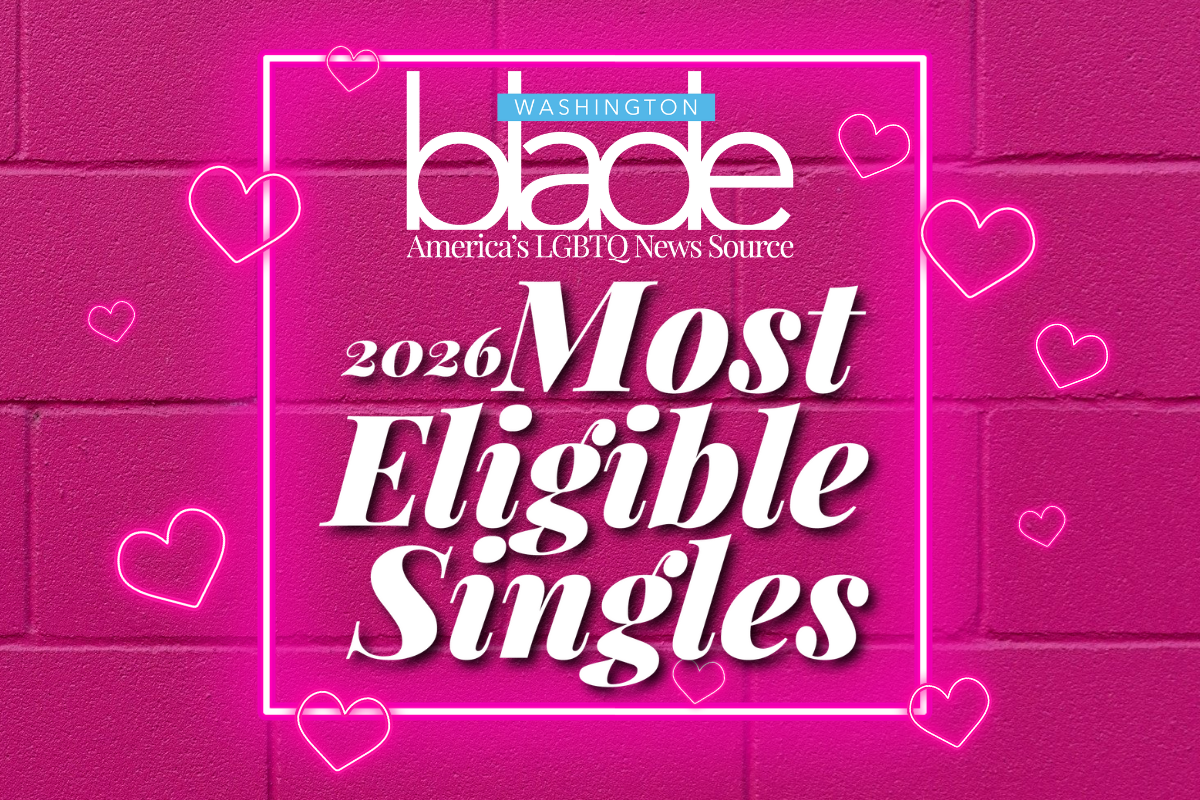
Are you or a friend looking to find a little love in 2026? We are looking for the most eligible LGBTQ singles in the Washington, D.C. region. Nominate you or your friends until January 23rd using the form below or by clicking HERE.
Our most eligible singles will be announced online in February. View our 2025 singles HERE.
-

 District of Columbia4 days ago
District of Columbia4 days agoTwo pioneering gay journalists to speak at Thursday event
-

 National3 days ago
National3 days agoWhat to watch for in 2026: midterms, Supreme Court, and more
-

 Colombia4 days ago
Colombia4 days agoBlade travels to Colombia after U.S. forces seize Maduro in Venezuela
-

 a&e features4 days ago
a&e features4 days agoQueer highlights of the 2026 Critics Choice Awards: Aunt Gladys, that ‘Heated Rivalry’ shoutout and more

